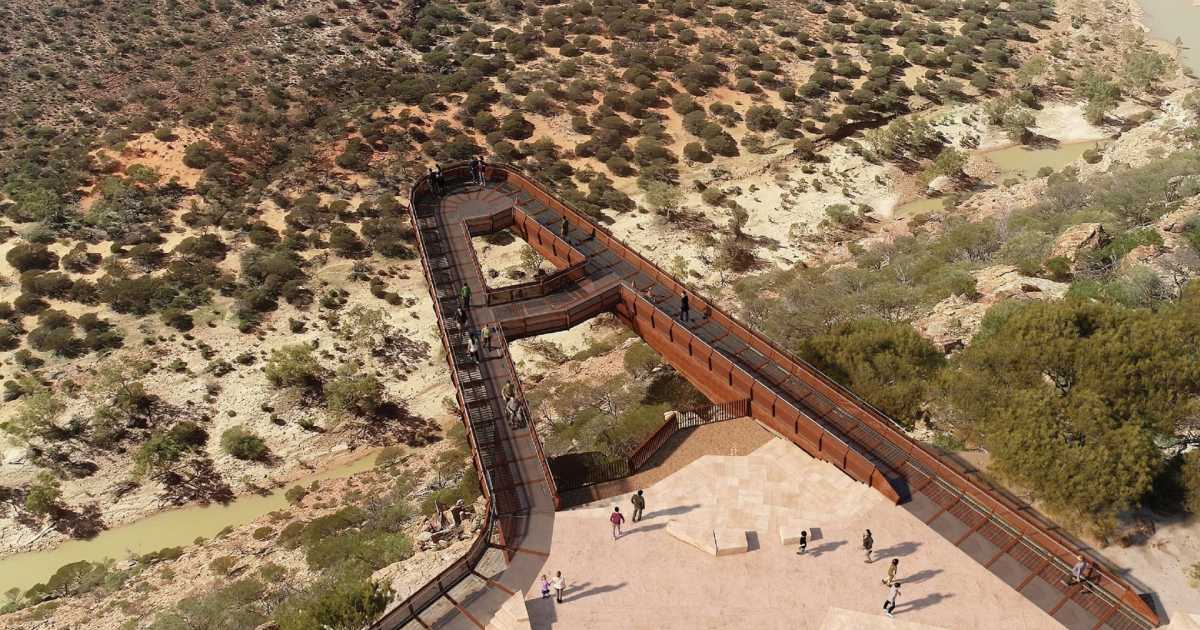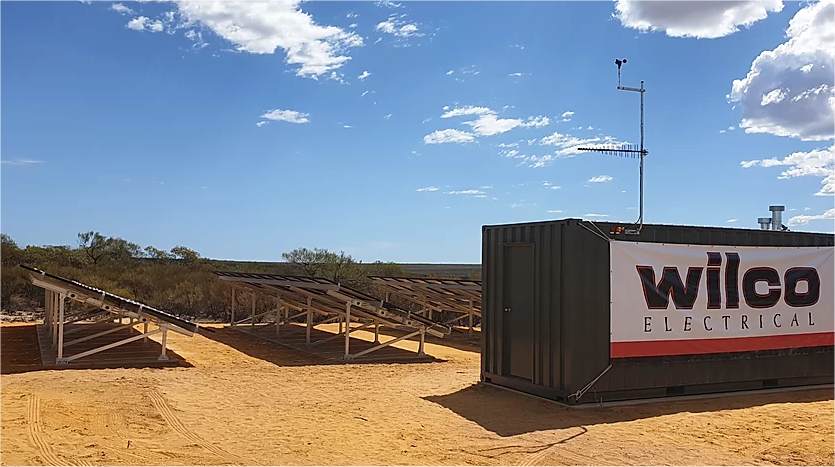
Kalbarri Skywalk in WA’s Kalbarri National Park officially opened on Friday, with the attraction’s kiosk to be powered by a stand-alone solar and energy storage system.
Kalbarri National Park is located approximately 570 km north of Perth, in the Mid West region the state. One of the many interesting features of the Park is Murchison River Gorge. Carved by the lower reaches of the Murchison River, the gorge is more than 80 kilometres long.
The two cantilevered Kalbarri Skywalks sit 100-metres high above the base of the gorge, projecting 25 and 17 metres beyond the cliff face.
“Today is an exciting day for everyone who was involved in the development of this bold and iconic facility – congratulations to the Nanda Traditional Owners, the Mid-West Development Commission, the Parks and Wildlife Service at the Department of Biodiversity of Conservation and Attractions and all the contractors,” said WA Environment Minister Stephen Dawson.
The $24 million project also included construction of a kiosk, shade shelters, toilets, parking, roads and upgrades to Meanarra Hill and Z Bend tourist sites.
Being a long way from the mains grid, solar and storage have been implemented to help power the kiosk that will open later this year. Wilco Electrical has installed a 40kW solar power system, 80 kWh of battery storage and a fully automated 10kVa backup generator.
Minister Dawson says Kalbarri Skywalk is projected to inject up to $73 million in additional expenditure into the local economy over the next decade. While the COVID-19 situation has no doubt put a dampener on visits to Kalbarri National Park this year due to travel restrictions, annual visits jumped by almost 100,000 over the past five years to reach more than 450,000 in 2019.
Off-Grid Solar + Storage To Boom In WA
On a related note, Stand-Alone Power Systems (SPSs) using solar panels, battery storage and generators for backup are to become increasingly common in Western Australia – even in some areas currently serviced by powerlines. The passing of the Electricity Industry Amendment Bill 2019 by State Parliament in April this year enables Western Power to use stand-alone power systems and storage devices as part of the South West Interconnected System (SWIS), following previous successful trials.
Currently, half of Western Power’s overhead distribution network services less than three per cent of its customers. Western Power says it can install thousands of SPS units over the next three decades, avoiding hundreds of millions of dollars in replacing poles and wires. Additionally, the widespread use of SPS will provide better quality and more reliable power for “fringe-of-grid” customers.
In April, the company said it was installing 57 SPS in the Midwest, Great Southern and Wheatbelt regions this year, with a further 100 to be installed in 2021. A larger Western Power project involving solar energy and storage, but not entirely off-grid, is the Kalbarri Microgrid.


 RSS - Posts
RSS - Posts



Speak Your Mind